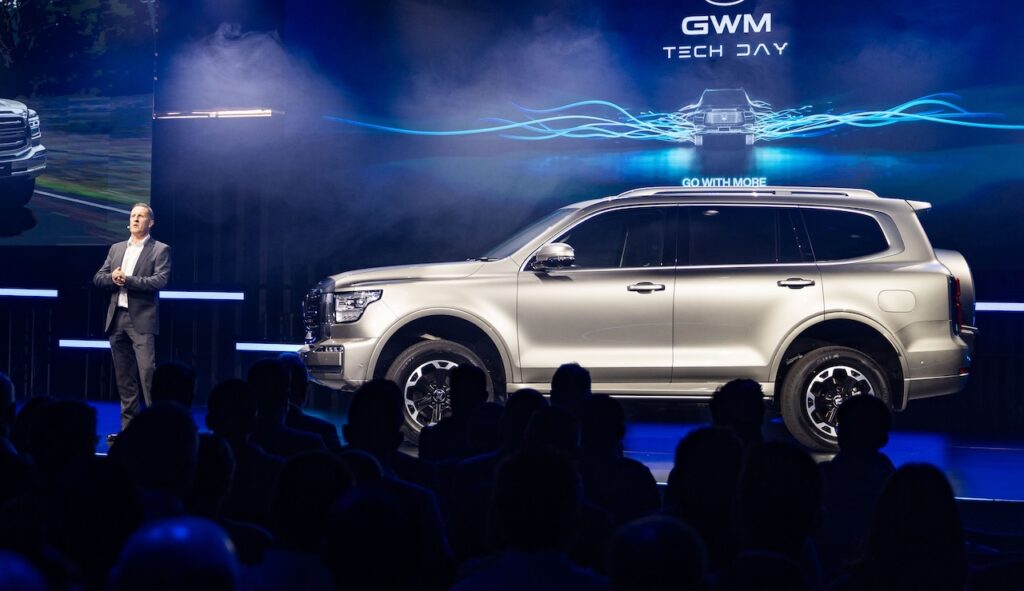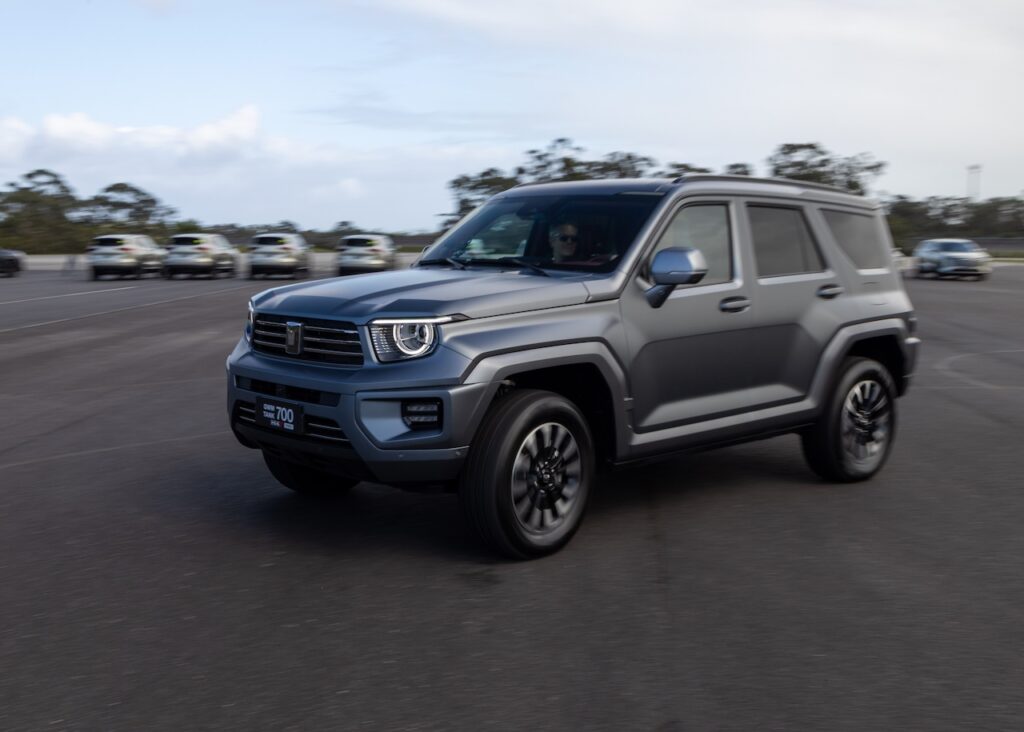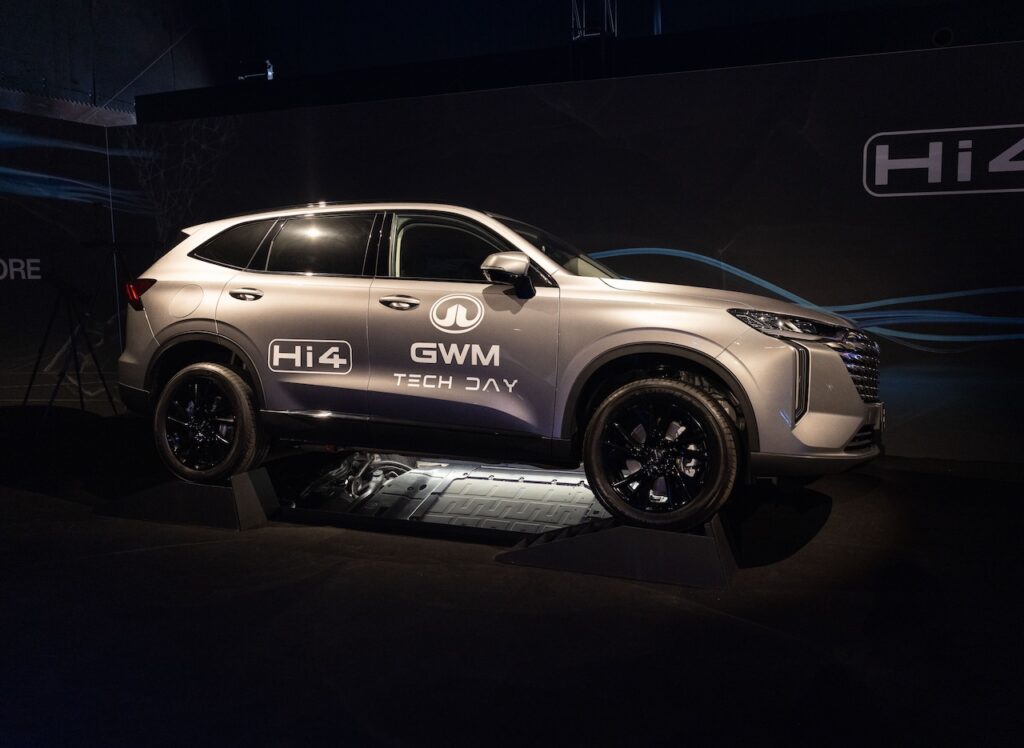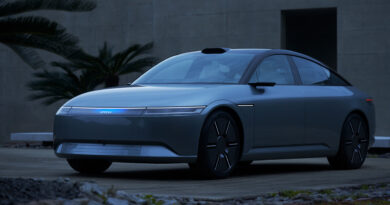GWM PHEV onslaught: Chinese giant identifies plug-in SUVs as vital to its huge Aussie growth targets
GWM is unleashing a plug-in hybrid onslaught that extends from the suburbs to the outback with a range of fuel miser SUVs utilising the brand’s Hi4 and Hi4-T PHEV technology.
Part of “a comprehensive brand refresh in Australia and New Zealand” the newcomers include a sharply priced rechargeable version of the Haval H6 mid-sized family SUV, multiple Tank off-roaders and models launched under the new Wey premium brand in 2026.
Emphasising the importance of Australia and New Zealand as right-hand drive markets – the two make up almost half of GWM’s global RHD sales – vice president of GWM International, James Yang, said he saw Australia as “a launching pad for reaching other premium markets”, including Europe.
READ MORE: Plug-in hybrid GWM Tan 500 Hi4-T launched in Australia with 120km of EV range
READ MORE: Australia’s first mainstream plug-in 4×4 wagon detailed. The GWM Tank 500 PHEV is a real Toyota Prado fighter!
READ MORE: GWM Ora SUV outed: New small EV wagon to spare EV price war
READ MORE: 2025 GWM Haval H6 adds more hybrids: Cheaper PHEV and flagship hybrid expand Chinese medium SUV line-up
Crucially, the new breed of plug-ins will help the fast-growing Chinese brand meet strict new CO2 emissions targets as part of the New Vehicle Efficiency Standard that came into force in July 2025 and continues to get tougher until the end of the decade.

GWM Australia and New Zealand’s head of marketing and communications, Steve Maciver, says PHEV will continue to play an important role over the next three or four years as Australians transition to more fuel-efficient vehicles.
However, he expects an EV resurgence as the technology matures and new car buyers warm to weaning themselves off petrol and diesel.
“PHEV in the short to mid-term is going to have to take up a far bigger portion of our sales,” said Maciver.
“Beyond that, EV will come. We have got more announcements to make on Ora.”
Maciver said GWM was still on target to be selling 75,000km cars annually – potentially cementing it as one of the top five brands on the market – by 2027.

The solid model rollout is also set to continiue.
“We’ve had seven new model launches this year. We will have roughly the same next year, if not more.”
Each of the new GWMs will undergo extensive local testing and development at the former Holden Proving Ground at Lang Lang as part of a program to improve the ride and handling of the new models.
GWM this year enlisted former Holden engineer Rob Trubiani to tune the cars to local tastes and liaise with head office in China to improve the way future GWMs drive.
GWM this week showcased some of its local engineering work – most notably on the Cannon Alpha ute and Haval H6 – and also announced the Tank 500 Hi4-T would be the brand’s new range topper, priced from $79,990 drive-away (there’s a $2000 discount on early arrivals).

GWM also dropped heavy hints the smaller Tank 300 Hi4-T was on its way to Australia and even had three examples on-hand for dealers and media to sample during its event.
The larger Tank 700 Hi4-T PHEV was also present. It has previously been suggested as an Australian arrival as soon as 2026, possibly with a new V8 PHEV powertrain fitted.
The new Tank 500 Hi4-T PHEV not only brings a tempting sales pitch on fuel economy but also on performance.
Teaming a 2.0-litre four-cylinder turbocharged engine with two electric motors in the Tank 500 Hi4-T yields an impressive 300kW and 750Nm for 0-100km/h acceleration in 6.9 seconds.

Claimed fuel use according to the government test is 2.1 litres per 100km, although that relies on having the 37.1kWh battery pack charged.
That battery can provide about 100km of EV range.
When driven with the battery in a low state of charge GWM says fuel use will be about 8.4L/100km.
Compare that with the 227kW and 700Nm from the diesel-powered LandCruiser 300-Series and it’s easy to see the appeal. The LandCruiser’s claimed fuel use is 8.9L/100km.
The Tank 500 Hi4-T also boasts solid off-road credentials, including the ability to wade through 800mm of water and tow up to 3000kg.
And with a drive shaft between the front and rear wheels – the key differentiator in the Hi4-T tech – as well as triple locking differentials it has the ability to send 100 per cent of drive to a single wheel, maximising traction.

There’s also a traditional low range transfer case to multiply torque at low speeds for slow speed off- road work.
However, the additional weight of the bigger battery and off-road systems means GWM has deleted the third row of seats for the Hi4-T model, limiting seating capacity to five.
It appears likely Wey will bring with it the Hi4-Z alternative to the Hi4-T system, that eschews the drive shaft connecting the front and rear wheels and has a more on-road focus.
The large three-row Blue Mountain SUV has also been tipped as the host for an Aussie launch of Hi4-Z.
It combines a 1.5-litre turbo-petrol engine with front and rear axle e-motors for outputs around 380kW and 930Nm.
Claimed electric range in the latest Blue Mountain via a 52.3kWh battery pack is up to 220km and the combined range 1343km (WLTC).

“[Wey] could be where we bring in Hi4-Z, we increase the performance, we increase the range,” said Maciver.
Meanwhile, the rechargeable H6 provides a plug-in hybrid alternative to popular mid-sized SUV hybrids such as the Toyota RAV4, Kia Sportage, Nissan X-Trail, Hyundai Tucson and Mitsubishi Outlander and kicks off at a sharp $42,990 drive-away.
Hi4 models – with all-wheel drive – start from $47,990 drive-away.
Each gets a 1.5-litre four-cylinder turbo with an electric motor – or two in the AWD variants – for more than 100km of EV range.




